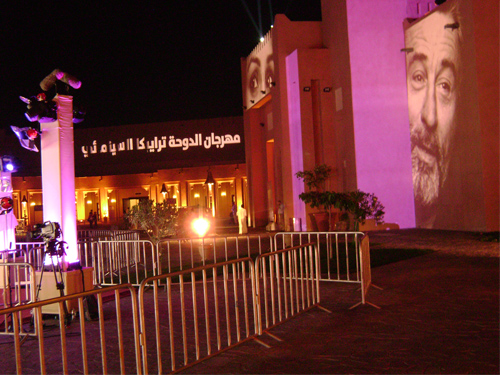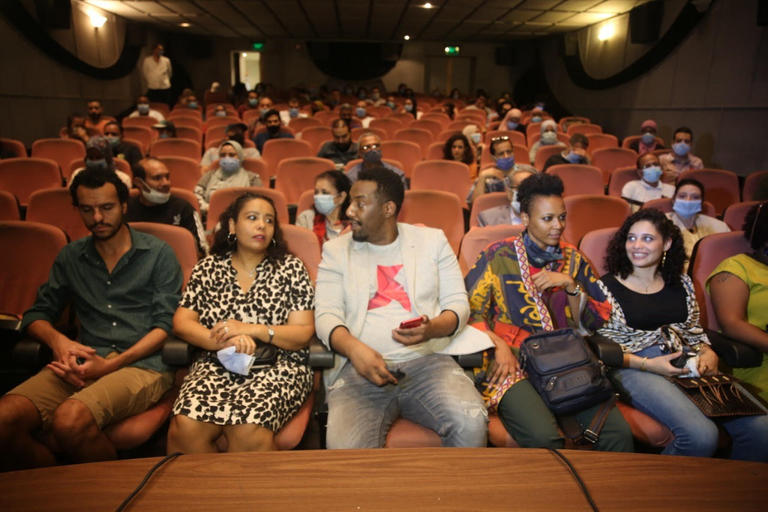
DOHA – The third Doha Tribeca Film Festival kicked off Tuesday with the US$55 million production “Black Gold,” a co-production of the Doha Film Institute and Tunisian producer Tarek Ben Ammar. Helmed by French director Jean-Jacques Annaud, “Black Gold” takes place in the Arab desert in the early 20th century, where two Arab countries fall in conflict after the discovery of oil in the land separating their borders. Although the main characters are Arabs, the leads were given to Spanish star Antonio Banderas, playing Sheikh Nassib, British actor Mark Strong, playing Nassib's nemesis Sheikh Amar, and French-Algerian rising star Tahar Rahim, playing Prince Auda.
While “Black Gold” has been hyped as a big budget Qatari production, it is difficult to see it as an Arab film given its Western cast and crew. Rahim delivers a good performance in the first half of the film as the bookworm, Auda, who is taken hostage from his father Amar and raised by Nassib only to become the savior of the two nations. Banderas, though, rarely appears on screen, and his casting seems to be a decision made solely to secure the film better distribution in Europe and the US. The mood of the film is quite Oriental and resembles the usual portrayal of Arabs in Western cinema.
“The Three Disappearances of Soad Hosni” was screened in the Arab Feature Competition. Envisioned as a documentary, it is hard to categorize it as such since it has no interviews, no narration and no script. Lebanese filmmaker Rania Stephan’s approach comes off more like an experimental art project, and indeed she was commissioned by the Sharjah Art Foundation to make the film. To depict the three main chapters in the life of the Egyptian sweetheart, Stephan assembled and re-edited scenes of Hosni in her films, collected from VHS tapes.
The first part centers on Hosni’s early career as a rising actress, and how she longed to become a famous star. In the second part, viewers go through a collage of tantalizing scenes showing how Hosni became an icon of beauty, a sex symbol, and even a contemporary Aphrodite, as described by Yehia Chahine’s character in the film “Shei Men al-Azab” (A Piece of Torment, 1969). The third and final chapter shows, also through scenes from her films, how Hosni was looking for real love through her many marriages but died without finding it.
The exaggerated compilations of intimate scenes Stephan makes, which include kisses, lovemaking and glimpses of Hosni’s body, overlook the artistic context for which these scenes were originally created: complete films with specific subjects. Stephan damages Hosni's memory by summarizing her career in this way, portraying her simply as an object of beauty for teenagers.
Another disastrous production is the “The Virgin, the Copts and Me," also screened in the Arab Feature Competition. Directed by the Egyptian-born, French-raised Namir Abdel Messeeh, the film tries to investigate and recreate an incident in the late 1960s when a group of Coptic Egyptians claimed to have seen the Virgin Mary. Abdel Messeeh decided to involve his mother as co-star, as she was one of those who witnessed the event. He then traveled to Upper Egypt not only to investigate the event with his mother’s family but also to convince those there into becoming his cast and crew in a “film” reenacting the appearance. Abdel Messeeh went even further in casting a young girl as the Virgin Mary, who during production was lifted into the air using cables in front of a green screen, a scene resembling the making of "The Matrix.”
The Doha Tribeca Film Festival continues until Saturday with much-anticipated screenings of the Egyptian "Lust," the Tunisian "Boxing with Her" and the Iraqi "Salaam Dunk."




